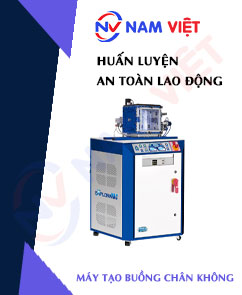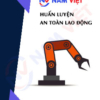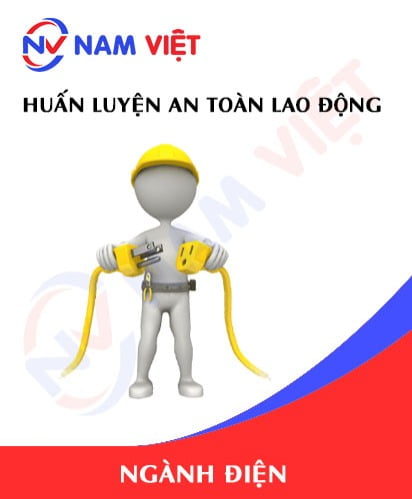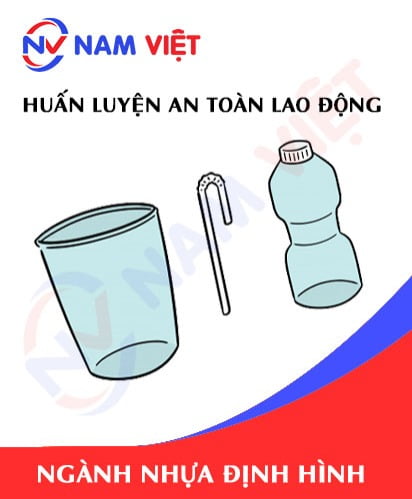Occupational Safety Training for Operating Vacuum Chamber Machines
99,000 ₫
Note: The above price is calculated per person and may vary depending on the number of participants in the course and market fluctuations. For more accurate price support, please refer to the pricing list or contact our consulting staff directly.
Occupational safety is an important issue when operating vacuum chamber machines and must be addressed promptly to ensure the health and safety of workers and enhance the reputation of businesses here. The Occupational Safety Training is one of the effective solutions to raise awareness of accident prevention methods for workers operating vacuum chamber machines.
Table of Contents
Toggle1. Overview of Vacuum Chamber Generator
a. What is a Vacuum Chamber Generator?
A vacuum chamber generator is a device used to create a vacuum environment inside a sealed chamber or cavity. The main purpose of this device is to reduce the air or other gas pressure inside the chamber to a level lower than the atmospheric pressure outside, creating an environment that is nearly gas-free.
Applications
- Scientific Research: In laboratories to study physical and chemical phenomena in a vacuum environment.
- Manufacturing: In processes such as electronics component fabrication, material industries, and vacuum welding processes.
- Medical: In devices like X-ray machines or medical processing procedures requiring vacuum environments.
- Agriculture and Food: Used in food packaging processes to preserve and extend the shelf life of products.
Important Factors
- Vacuum Level Achieved: Depends on the type of pump and machine design. Measured in units such as torr, pascal, or millibar.
- Chamber Material: Must withstand external pressure and not react with materials inside.
- Vacuum Retention Capability: The chamber must maintain a stable vacuum level throughout use.
A vacuum chamber generator is an important device in many industrial and research fields, helping create better-controlled environments for specialized applications.

b. Operating Principle of Vacuum Chamber Generator
1. Vacuum Creation
1.1. Vacuum Pumps
The vacuum chamber generator uses one or more types of vacuum pumps to reduce the gas pressure inside the chamber. Common vacuum pumps include:
- Rotary Vane Vacuum Pump: Uses high-speed rotating vanes to expel gas molecules from the chamber. It is very effective in achieving higher vacuum levels.
- Screw Vacuum Pump: Uses rotating screws to compress and push gas out. This pump can achieve lower vacuum levels and is often used for applications requiring high vacuum.
- Piston Vacuum Pump: Uses pistons to compress and evacuate gas, typically used for medium vacuum levels.
- Turbo Vacuum Pump: Uses very high-speed rotating blades to expel gas molecules. This pump is very effective for creating ultra-high vacuum levels.
1.2. Pump Activation
When operating, the vacuum pump sucks gas molecules from the vacuum chamber through piping systems. This process reduces the number of gas molecules inside the chamber, thus lowering the internal gas pressure.
2. Vacuum Maintenance
2.1. Pressure Calculation
The pressure inside the vacuum chamber is calculated based on external pressure and gas flow being pumped out. Pressure sensors (such as piezoelectric or electronic pressure sensors) are used to monitor and regulate the chamber’s internal pressure.
2.2. Ensuring Seal
To maintain a stable vacuum level, the chamber and its connections must be designed to be airtight and prevent external gas infiltration. Rubber gaskets or leak-proof materials are commonly used to ensure system tightness.
3. Chamber Opening and Closing
3.1. Chamber Door
Vacuum chambers typically have doors or lids that can be opened and closed to insert or remove materials. When the door is closed, the pump system continues to operate to maintain the vacuum level inside.
3.2. Process Completion
When the vacuum chamber process is finished, the pump may be turned off and the chamber door opened to remove the product. If necessary, the system can be cleaned and prepared for the next cycle.

c. Industries Using Vacuum Chamber Generators
Electronics Industry
- Electronic Component Manufacturing: During fabrication of components like processors, semiconductors, and integrated circuits, vacuum environments are necessary to remove impurities and ensure component quality.
- Thin Film Deposition: Used in chemical vapor deposition (CVD) or physical vapor deposition (PVD) to create thin layers on material surfaces.
Materials Industry
- Composite Material Production: In manufacturing composites like carbon fiber or synthetic resin, vacuum chamber generators help remove air bubbles, improving product quality and durability.
- Production of Ultra-Durable Materials: Manufacturing special materials such as ultra-durable ceramics or heat-resistant materials requires vacuum environments to control chemical reactions and temperature.
Medical Industry
- X-ray Machines: In medical devices like X-ray machines or other imaging equipment, vacuum chambers protect sensitive components and ensure accurate operation.
- Medical Device Manufacturing: Used in manufacturing medical devices requiring vacuum to ensure purity and performance.
Chemical Industry
- Chemical Research: In chemical laboratories, vacuum chambers are used to study chemical reactions under low pressure or no-air conditions.
- New Compound Fabrication: Research and production of oxygen- or moisture-sensitive chemical compounds require vacuum environments.
Space Industry
- Space Equipment Testing: Used to test space devices and components under simulated space conditions with very low pressure and no air.
- Space Technology Development: Vacuum chamber generators help simulate space vacuum conditions for research and development of space technologies and materials.
Food and Agriculture Industry
- Food Packaging: Vacuum chamber generators are used in food packaging processes to remove air and prevent bacterial growth, extending product shelf life.
- Drying: Used in vacuum drying processes to preserve food and agricultural products, retaining quality and nutritional value.
New Manufacturing Industry
- New Product Manufacturing: In advanced manufacturing processes such as nano-materials or high-tech products, vacuum chamber generators create a pure environment and better control production conditions.
2. Overview of Safety Training for Operating Vacuum Chamber Generators
a. What is Occupational Safety Training?
- Occupational safety training for operating vacuum chamber generators consists of sessions to raise awareness on accident prevention for workers. Workers directly operating vacuum chamber generators fall under group 3.
- The safety training course helps workers recognize and avoid hazards, reducing the risk of occupational accidents during work.
REGISTER FOR OCCUPATIONAL SAFETY TRAINING SERVICE
b. Training Duration
Initial safety training duration
- Total training time is at least 24 hours, including exam time.
- 8 hours of theory on safety and hygiene laws and policies.
- 8 hours of basic safety and hygiene theory.
- 4 hours of theory on specialized training content.
- 2 hours of practice on specialized training content.
- 2 hours of theoretical exam at the end of the course.
The safety training center will schedule multiple sessions depending on worker availability, usually 6 sessions over 3 days if continuous attendance is possible.
Periodic safety training duration
- Before the occupational safety card expires, workers wishing to renew must attend periodic safety training with a duration of at least 50% of the initial training time.
Explanation: The total periodic safety training time is at least 12 hours, including exam time. After completing the course and passing the exam, workers will be reissued or have their occupational safety card extended.
c. Training Course Content
| No. | TRAINING CONTENT | TRAINING DURATION (HOURS) | |||
| Total | Including | ||||
| Theory | Practice | Exam | |||
| I | Safety and Hygiene Policies and Laws | 8 | 8 | 0 | 0 |
| 1 | Overview of legal documents related to occupational safety and hygiene. | 6 | 6 | ||
| 2 | Standards and technical regulations for occupational safety and hygiene. | 1 | 1 | ||
| 3 | Specific regulations by government agencies regarding safety and hygiene when constructing, expanding, or renovating facilities that produce, use, store, and inspect machines, equipment, materials, or substances with strict safety and hygiene requirements. | 1 | 1 | ||
| II | Basic Safety and Hygiene Knowledge | 8 | 8 | 0 | 0 |
| 1 | Basic knowledge of hazards and harmful factors in the workplace. | 4 | 4 | ||
| 2 | Methods to improve working conditions. | 1 | 1 | ||
| 3 | Safety culture in production and business. | 1 | 1 | ||
| 4 | Rights and responsibilities of employers and employees; policies and regimes on occupational safety and hygiene; functions and duties of safety and hygiene networks. | 1 | 1 | ||
| 5 | Safety and hygiene rules, signs, safety equipment, personal protective equipment; skills in first aid, accident prevention, and occupational disease control. | 1 | 1 | ||
| III | Specialized Training Content | 6 | 4 | 2 | 0 |
| Comprehensive knowledge about types of machines, equipment, substances that generate hazardous or harmful factors; risk analysis and management in occupational safety and hygiene; safe working procedures with machines and substances with strict safety requirements. | 6 | 4 | 2 | ||
| IV | Safety Training Course Final Exam | 2 | 2 | 0 | 0 |
| Total | 24 | 22 | 2 | ||
See more training content of 6 groups
d. Occupational Safety Card
After completing the occupational safety training course and passing the exam, workers will be issued an occupational safety card (commonly called the occupational safety certificate for group 3).
The group 3 safety card clearly shows information such as full name, date of birth, job and specific working environment. It also shows training time, official stamp, and signature confirming course completion.
According to the safety card issuance regulations stated in clause 2 of Article 24 Decree 44/2016/ND-CP, there are two cases:
- If the employer and employee have a labor contract, the employer must sign, stamp, and countersign the safety card for the trained group 3 workers after the training course and exam.
- If the worker is freelance or seasonal and does not have a labor contract, the training unit must sign, stamp, and countersign the safety card for the worker after the course and exam.

3. Hazards for Workers When Operating Vacuum Chamber Generators
Pressure Hazards
- Chamber Explosion or Rupture: When the vacuum chamber generator operates, the pressure inside the chamber drops sharply compared to outside pressure. If the chamber is not properly designed and tested, there is a risk of explosion or rupture due to the large pressure difference.
Technical and Mechanical Hazards
- Mechanical Injuries: Mechanical parts, such as pump impellers, can cause injuries if not properly guarded or if the equipment malfunctions.
Hazards of Liquid or Gas Leakage
- Chemical Leakage: In some applications, toxic chemicals or gases may be used or processed in the vacuum chamber. Leakage from the chamber can pose health hazards.
Temperature Hazards
- High Temperature: Some vacuum pumps can generate high temperatures during operation, causing burns or equipment damage.
Electrical Hazards
- Electric Shock: Pumps and related electronic devices can pose electric shock risks if not properly installed or maintained.
Economic and Environmental Risks
- Equipment Damage: Failures or damage to equipment can cause significant economic losses and disrupt production.
Psychological and Physical Risks
- Stress and Fatigue: Working with complex and precision equipment can cause stress and fatigue for workers.
4. Accident Control Measures When Operating Vacuum Chamber Generators
Training and Education
- Regular Training: Provide in-depth training for all staff on operating vacuum chamber generators, including safety procedures, hazard identification, and emergency handling.
- User Manuals: Provide detailed operating manuals covering preparation, operation, and shutdown procedures.
Equipment Design and Maintenance
- Safe Design: Ensure vacuum chamber generators are designed to standards with safety features such as safety valves, pressure sensors, and alarm systems.
- Regular Maintenance: Conduct scheduled maintenance and inspections to detect and fix faults or potential issues before they cause incidents.
Pressure Control
- Pressure Monitoring: Use sensors and pressure gauges to continuously monitor chamber pressure. Ensure measuring devices are calibrated and working correctly.
- Safety Valves: Install safety valves and pressure relief devices to prevent excessive pressure build-up that could cause explosions or ruptures.
Safe Operating Procedures
- Pre-operation Checks: Before starting the machine, check all systems, seals, and connections to ensure no leaks and normal operation.
- Startup and Shutdown Procedures: Follow strict startup and shutdown protocols to ensure safe operation. Ensure workers fully understand the necessary steps.
Mechanical Safety
- Mechanical Guards: Ensure all mechanical parts like impellers and screws are protected by guards or covers to prevent direct contact.
- Mechanical Risk Assessment: Conduct mechanical risk assessments and update preventive measures as needed.
Chemical Risk Management
- Provide PPE: Supply personal protective equipment (PPE) such as gloves, goggles, and masks when working with toxic chemicals or gases.
- Ventilation Systems: Ensure good ventilation to remove toxic gases or chemical vapors from the work area.
Temperature Safety
- Temperature Monitoring: Monitor pump and related parts’ temperature to prevent hazardous overheating.
- Cooling Systems: Provide cooling systems or isolate hot parts to protect workers from burns.
Electrical Safety
- Electrical System Checks: Ensure electrical systems are installed to safety standards with proper grounding. Perform regular electrical inspections.
- Electrical Hazard Warnings: Provide warnings and training on electric shock risks and emergency response.
Seal and Leak Assurance
- Leak Testing: Regularly check seals and connections for gas or liquid leaks.
- Alarm Systems: Install alarms to detect and notify of leaks or incidents.
Incident Handling Procedures
- Emergency Response Plans: Develop emergency response plans and train staff on procedures for accidents or incidents.
- Reporting Systems: Establish accident reporting and investigation systems to improve prevention and safety.
5. Benefits of Occupational Safety Training
An Toàn Nam Việt provides your business with the following excellent benefits after completing occupational safety training courses as regulated by Decree 44/2016/ND-CP on occupational safety and hygiene for companies and enterprises.
- Workers can recognize potential accident hazards and take preventive measures to avoid workplace accidents.
- Your business can establish risk prevention measures in production, operation, and maintenance processes.
- Reduce costs caused by occupational safety risks.
- Uninterrupted production processes help increase labor productivity and product quality.
- Comply fully with occupational safety laws, avoiding legal risks.
- Create credibility and professionalism, thereby elevating your business brand.
Nam Việt’s training courses are the solution to prevent external factors affecting individuals, helping them avoid dangers that could cause injuries or worse, death.
REGISTER FOR OCCUPATIONAL SAFETY TRAINING SERVICE
6. Customer Feedback After Completing Training
An Toàn Nam Việt has many years of experience accompanying various businesses in Vietnam generally and in southern provinces specifically. This responsibility is very precious to Nam Việt, so the Occupational Safety Training has been increasingly professional. The motivation for Nam Việt’s growth comes from positive feedback and suggestions from businesses. Below are testimonials from partners we have served.
Hoa Dat Construction and Trading Joint Stock Company
“Nam Việt’s service greatly helped us simplify occupational safety and complete safety documentation for working processes. The consulting team was enthusiastic and timely answering our questions. 5 stars for Nam Việt.”
See more customer interviews after using An Toàn Nam Việt’s services
7. An Toàn Nam Việt’s Capacity in Occupational Safety Training
An Toàn Nam Việt is a reputable and quality occupational safety training center in Vietnam today. Training sessions are held continuously at factories, plants, or construction sites nationwide (all 63 provinces).
REGISTER FOR OCCUPATIONAL SAFETY TRAINING SERVICE
Occupational safety training license
- An Toàn Nam Việt has been inspected and certified by the Safety Department of the Ministry of Labor, Invalids and Social Affairs for eligibility to conduct occupational safety and hygiene training, strengthening our training capacity.

Materials and lectures
- Before being used in Occupational Safety Training courses, materials are reviewed and approved to ensure correctness and effectiveness.
- Teaching methods are standardized according to An Toàn Nam Việt’s guidelines, developed by experts in occupational safety and hygiene training to maximize knowledge absorption.
Facilities
- Controlling environmental factors in training rooms improves teaching performance and learning effectiveness.
- Our training facilities have spacious rooms meeting standards for space, lighting, and training equipment, etc.
8. Nationwide Reputable and Quality Safety Training Center
At An Toàn Nam Việt, we prioritize professional occupational safety training. We believe imparting self-protection knowledge to workers equips them with safety tools for their livelihoods and contributes to nation-building.
To ensure effective training, we meticulously prepare everything from teaching tools, equipment, curriculum, materials, sound, and lighting.
Our instructors are experts with many years of experience, some with research works on hazard identification across industries and prevention methods.
Lectures are practical and conveyed in an engaging, easy-to-understand manner for workers. The content strictly complies with Decree 44/2016/ND-CP.
Thus, workers gain many hazard prevention techniques and self-protection skills applicable in real work.
Our training center proudly provides professional, reputable occupational safety training with these advantages:
- Competitive training costs with guaranteed quality.
- Flexible training schedules aligned with company production.
- Fast and legally compliant certification procedures.
- Experienced instructors with many years in the field.
- Training rooms with controlled factors to boost teaching and learning efficiency.
- Customized lectures suited to the occupational safety needs of enterprises.
- Dedicated and professional service to support clients accurately and quickly.

9. Additional References for Occupational Safety Training Materials
No comments yet















Review Occupational Safety Training for Operating Vacuum Chamber Machines
There are no reviews yet.